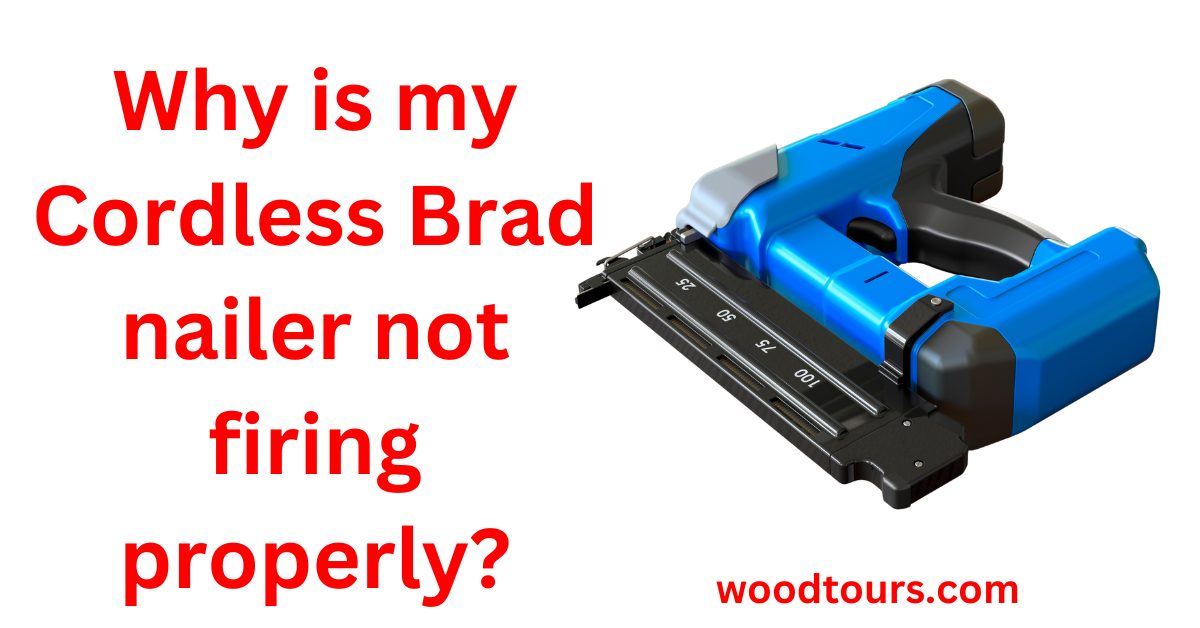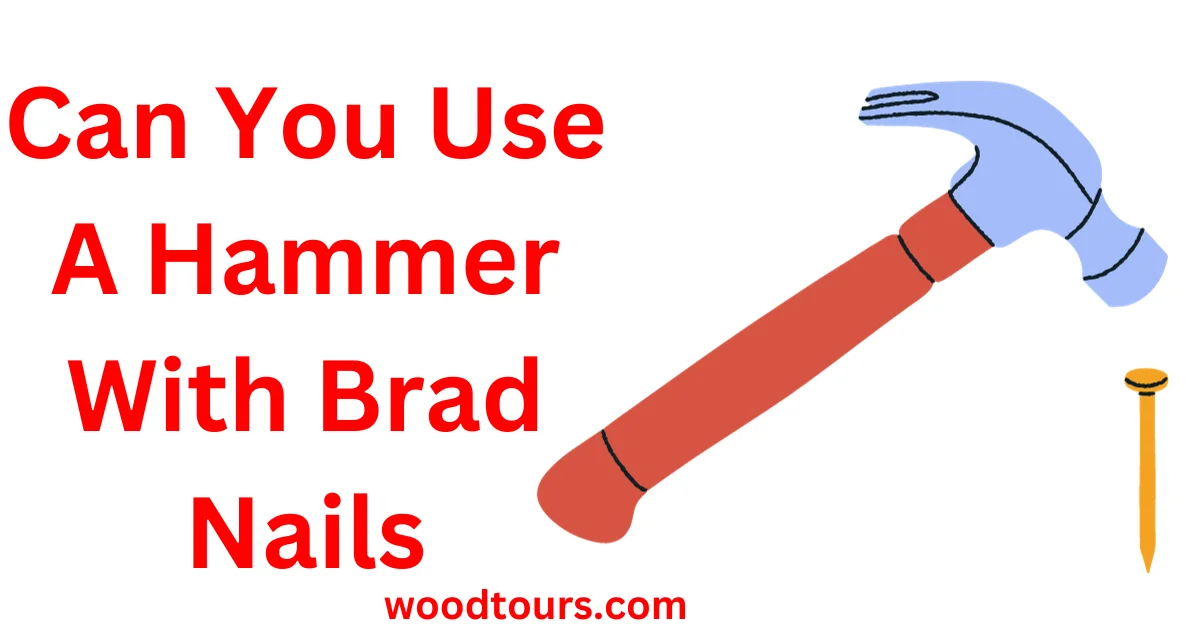Every new woodworking task adds a new power tool to your toolbox. Nothing is odd unless you confuse the two power tools for specific tasks. Consider the brad nailer vs crown stapler, two similar tools for different tasks. A brad nailer is versatile, whereas crown staplers are better known for their holding capacity. So, are Brad nailers good or should I pick a crown stapler? What are the differences which make these tools unique and powerful? What are the preferred tasks for these tools? Let’s split in these woodworking power tools.
Contents
Brad Nailer vs Crown Stapler
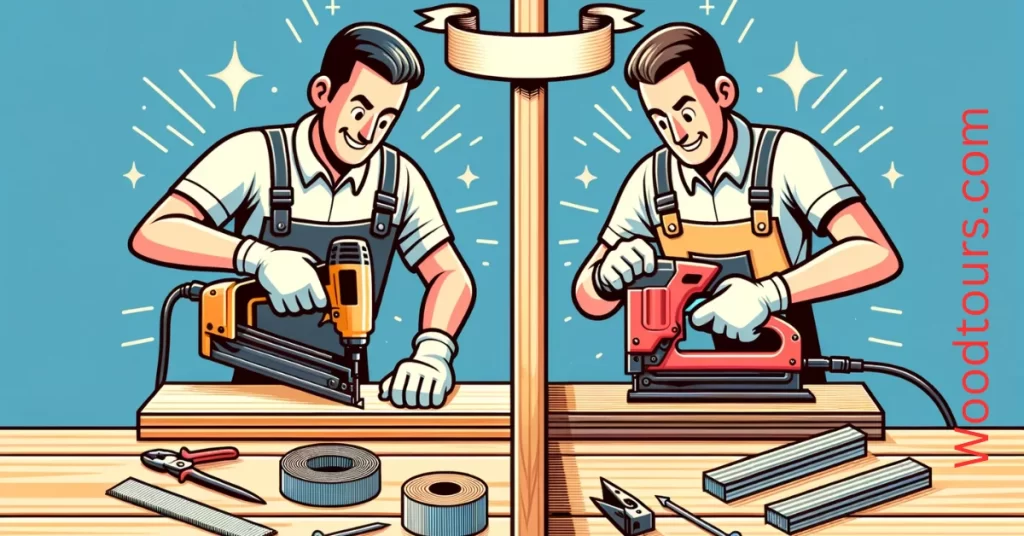
Brad Nailer

Brad Nailer
Quick Features
A brad nailer uses compressed air to drive thin, headless nails called brads into the wood. Brads are 18-gauge or 16-gauge nails that are 1/2 to 2 inches long.
Brad nailers have a magazine that holds the brads and a compressor that generates the compressed air. The compressor is powered by electricity or a battery.
Brad nailers are easy to use and can be used for woodworking, upholstery, and crafts.
Check: 21 vs 30 Degree Framing Nailer
Pros & Cons
Must Read: Can You Use Straight Nails in an Angled Nailer? & Angled vs Straight Finish Nailers
Crown Nailer stapler
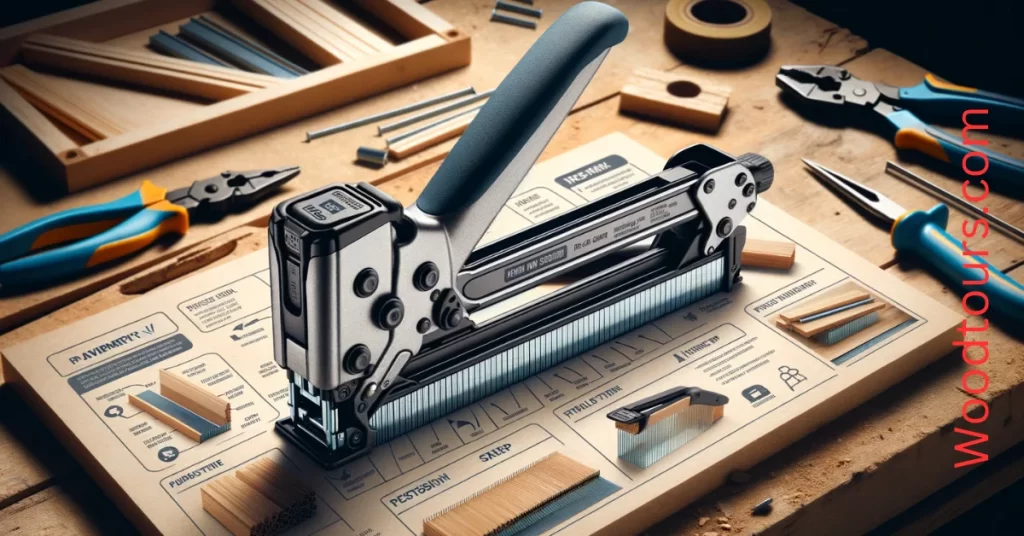
Crown stapler
Quick Features
A crown stapler uses compressed air to drive staples into wood. Staples have a flat or round head and two prongs. Crown staples are 18-gauge or 16-gauge staples that are 1/4 to 1 inch long.
Crown staplers have a magazine that holds the staples and a compressor that generates the compressed air.
Crown staplers have better-holding power than Brad nailers, making them a good choice for applications where strength is important.
Pros & Cons
Related: Brad Nailer vs. Framing Nailer
Comparison table
| Feature | Brad Nailer | Crown Stapler |
| Type of Fastener | Brad Nails (18-gauge or 23-gauge) | Crown Staples (18-gauge or 22-gauge) |
| Fastener Length | 5/8 to 2 inches | 3/8 to 1 inch |
| Fastener Head Type | Small, narrow, and rounded | Flat, wide, and rectangular |
| Fastening Mechanism | Driven by air pressure or electricity | Driven by air pressure or electricity |
| Application | Delicate and finishing work | Heavy-duty fastening and binding |
| Holding Power | Low to medium | High |
| Visibility of Fasteners | Brad nails are almost invisible | Crown staples are visible |
| Wood Splitting | Less likely to split wood | May cause wood splitting |
| Counter Sinking | Need pre-drilling | Sinks staples flush with the surface |
| Depth Adjustment | Adjustable for precise control | Adjustable for varying materials |
| Magazine Capacity | Holds 100-200 fasteners | Larger capacity, often 100-150 staples |
| Tool Weight | Lightweight and portable | Heavier and less portable |
| Common Uses | Trim work, molding, light assembly | Roofing, sheathing, flooring, fencing |
| Versatility | Limited to specific finishing tasks | Versatile, suited for multiple tasks |
| Price Range | Moderate to high | Moderate to high |
| Safety Features | Equipped with safety mechanisms | Safety mechanisms may vary |
Which one should you choose?
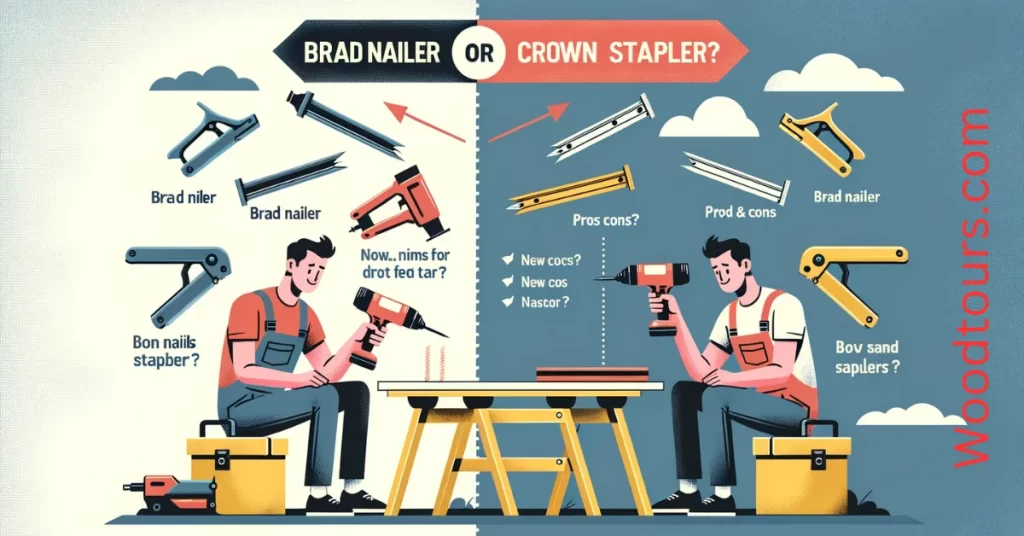
Selecting the appropriate power tool can significantly impact the success of your woodworking or carpentry project. Brad nailers and crown staplers are two indispensable tools that serve distinct purposes. Look at the crucial features of both these tools to choose the right one for your woodworking needs.
Fastener Type and Size
Brad nailers employ slender brad nails, commonly in 18-gauge or 23-gauge. These nails have small, rounded heads and come in various lengths. Brad nails are designed for discreet, inconspicuous fastening in delicate, finishing work.
Crown staplers use wide, flat crown staples, often in 18-gauge or 22-gauge. These staples offer a substantial surface area for a secure grip, making them suitable for structural applications. However, they are more visible due to their shape.
Fastening Mechanism
Brad nailers use air pressure or electricity to drive Brad nails precisely into the material. This precision minimizes the risk of wood splitting and surface damage, making them ideal for tasks where aesthetics and precision are crucial.
Crown staplers utilize a similar driving mechanism, but insert crown staples instead. These staples offer increased holding power but leave more visible marks, and there’s a higher potential for wood splitting, particularly in thinner materials.
Fastener Length

Brad nailers accommodate Brad nails ranging from 5/8 to 2 inches in length. This range is good for attaching thin materials and for tasks requiring precision.
Crown staplers accept staples with lengths of 3/8 to 1 inch. These shorter staples are ideal for securing thicker and sturdier materials typically found in structural projects.
Application
Brad nailers are best for trim work, cabinetry, furniture assembly, and paneling. When a clean, nearly invisible finish is essential, they are the tool of choice.
Crown staplers are ideal for roofing, sheathing, flooring, fencing, crate assembly, and other heavy-duty construction projects. Their superior holding power is critical for structural stability.
Visibility of Fasteners
Brad nails, when inserted, leave minimal and almost invisible marks. It is essential for maintaining the pristine look of your woodworking projects.
Crown staples are more visible and leave a rectangular imprint. While this is acceptable in structural work, it’s not ideal for finishing or delicate carpentry where aesthetics are paramount.
Holding Power
Brad nails offer relatively lower holding power, making them ideal for tasks that don’t require extensive structural integrity but focus on appearance and precision.
Crown staples provide substantial holding power, ensuring a secure and robust connection for demanding structural applications.
Versatility
Brad nailers are versatile but are primarily designed for delicate and finishing work. They are not good for heavy-duty construction tasks.
Crown staplers are versatile in their own right but are geared towards structural work. They don’t offer the precision needed for intricate, aesthetic woodworking.
What is the best use of a Brad nailer?
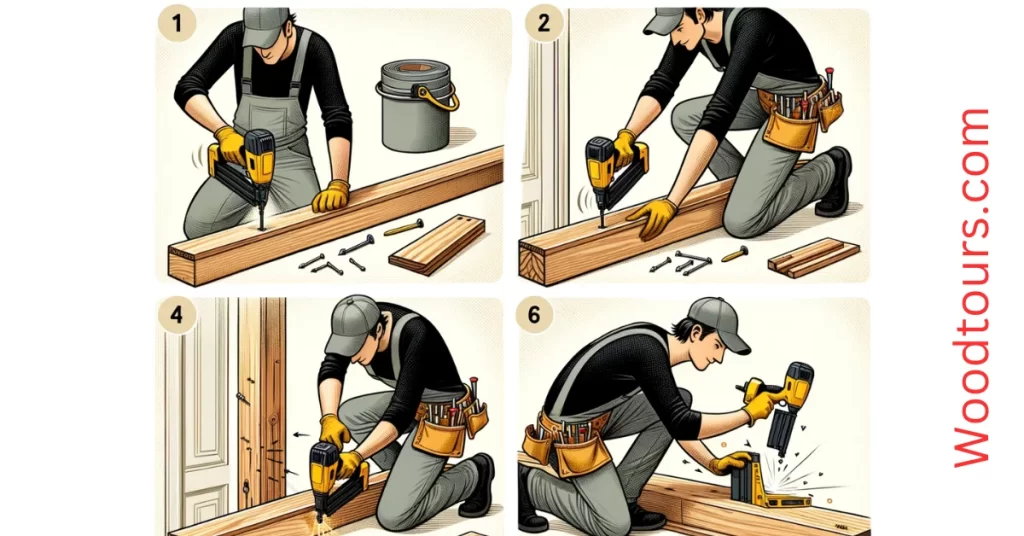
A brad nailer is best used for precise and delicate fastening tasks in woodworking and carpentry. Brad nailers are best for trim work, cabinetry, furniture assembly, paneling, door and window casings, fixing loose joints, crafts, and DIY projects.
Its small, narrow brad nails minimize wood damage and provide a clean finish, making it an essential tool for precision woodworking.
What is the best use of a crown stapler?

A crown stapler is best for heavy-duty fastening tasks requiring strong and secure connections, including roofing, sheathing, flooring, fencing, crate and pallet assembly, upholstery, and heavy construction.
The tool’s wide, flat staples provide substantial holding power, making it ideal for applications where durability and strength are paramount. At the same time, it’s less suitable for delicate or finishing work due to the visible staples.
Is a Brad nailer the same as a staple gun?
No, a Brad nailer is not the same as a staple gun. While both tools are used for fastening, they differ in several ways. A brad nailer is designed to drive small, slender brad nails with rounded heads, in 18-gauge or 23-gauge. These are primarily used for delicate and finishing work, leaving minimal visible marks.
On the other hand, a staple gun, or crown stapler, drives wider, flat crown staples, often in 18-gauge or 22-gauge. Crown staples offer more holding power and are suited for heavy-duty applications like roofing, sheathing, and fencing.
The distinction lies in the fastener type, size, and application, making these two tools suitable for different tasks in woodworking and construction.
Do staples hold better than brad nails?

Crown staples offer superior holding power compared to brad nails. The key factor behind this distinction is the shape and width of the fastener. Crown staples have a wider, flat profile, which creates a larger surface area in contact with the material, resulting in a stronger grip. This enhanced holding power makes crown staples preferable for heavy-duty structural applications like sheathing, roofing, and fencing.
In contrast, brad nails, being narrower and with smaller heads, are better suited for finishing work where their discreet appearance and reduced potential for wood splitting are prioritized over sheer strength.
Can a Brad nailer shoot crown staples?
No, a Brad nailer is not designed to shoot crown staples, and attempting to do so can lead to tool damage or malfunction. Brad nailers are specifically engineered to accommodate and drive slender brad nails with rounded heads. These tools are not equipped to handle the wider, flat crown staples used by crown staplers.
Is a Brad nailer good for crown molding?
A Brad nailer is good for crown molding, depending on the specific requirements of your project. Brad nailers are excellent for attaching lightweight and delicate trim, including some types of crown molding. However, it’s crucial to ensure that the brad nails are of an appropriate length and gauge for the thickness and weight of the crown molding.
In some cases, a finish nailer or a more substantial fastening method might be preferred for heavier or larger crown moulding pieces. It’s essential to choose the tool and fastener size based on the specific characteristics of your crown molding and the structural requirements of your installation.
Is Brad Nailer more powerful than a crown stapler?

A brad nailer is not more powerful than a crown stapler. Crown staplers have more holding power compared to brad nailers. This difference in power arises from the wider, flat crown staples used by crown staplers, which create a larger surface area in contact with the material, resulting in a stronger grip.
Brad nailers, which use smaller, rounded brad nails, are designed for finishing and delicate work, prioritizing aesthetics over sheer strength.
What is the difference between a brad nail and a crown?

A brad nail is a slender, fine-gauge fastener with a rounded head commonly used for finishing work. A crown refers to the flat, wide head of crown staples used in structural and heavy-duty applications in construction.
Can I use a brad nailer instead of a crown stapler?
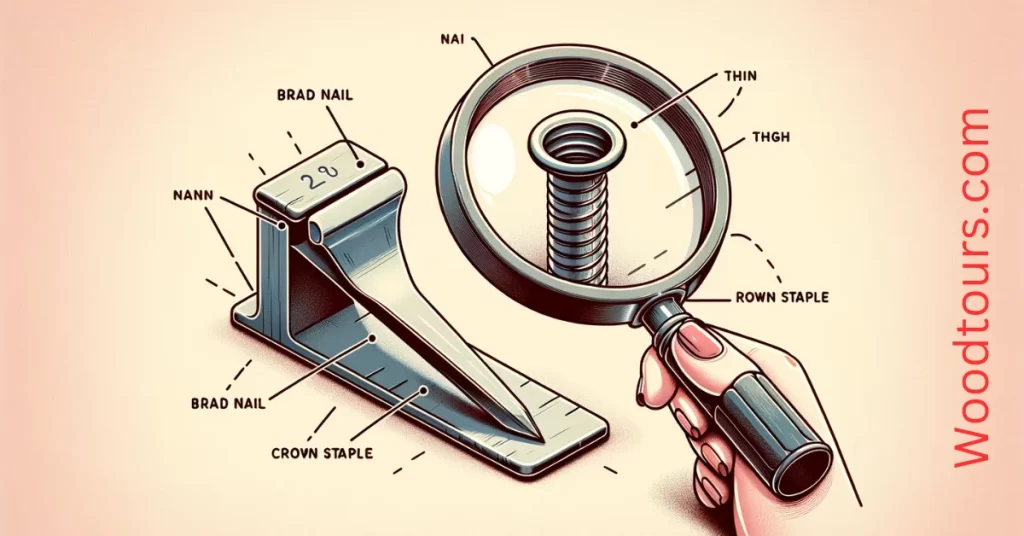
You cannot use a brad nailer instead of a crown stapler. Crown staplers are designed for heavy-duty structural fastening, offering superior holding power, while brad nailers are intended for delicate finishing work, emphasizing aesthetics over strength.


